Grow daikon radish (Thinning daikon radishes) Daikon radish plant care
Grow daikon radish in netting grow tunnel. This time, we’re thinning the daikon radishes. Thinning daikon radishes begins right after germination. The thinning is done three times in total. Now, let’s explain how to thin them.
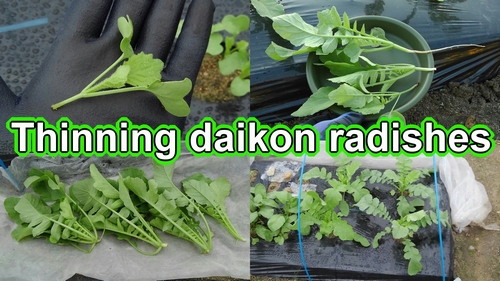
Daikon radish thinning: First Round (How to thin Japanese white radish)
The daikon seeds were sown in early September. About 10 days have passed since then. As the daikon seedlings have grown uniformly, it’s time for the first thinning.
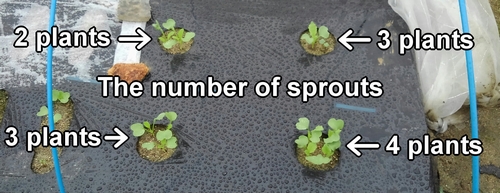
The first thinning of daikon radish involves thinning out one of the 4 sprouts, leaving 3 daikon sprouts. The thinning targets are sprouts with uneven cotyledon shapes, insect damage, or signs of illness. We won’t thin the daikon radish where the number of sprouts is three or less; we’ll leave them as they are.
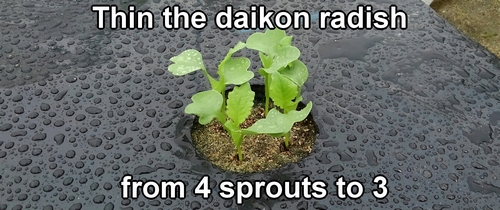
The daikon was sown together with radishes and cilantro.
The thinning process involves cutting the base of the germinated daikon radish with scissors. Pulling out from the base is not recommended as it may damage the roots of the remaining daikon, so it’s better to avoid this method.
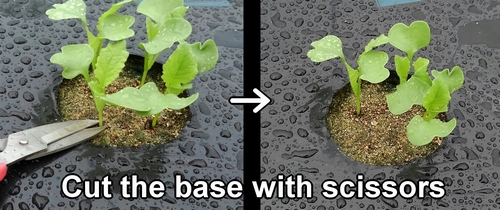
Especially when daikon are planted closely together, their roots may interfere with each other in the soil. Therefore, pulling them out during thinning carries some risk. Using scissors for thinning daikon may seem a bit troublesome, but it’s more reliable.
In the thinning of daikon radish, if you’re unsure which sprout to keep, consider future fertilization. The key is to observe the direction of the cotyledons. If the leaves are open toward the fertilization area, it might be a good idea to prioritize keeping that one.
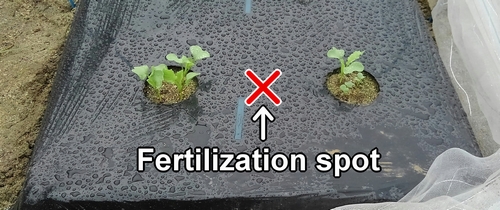
This is because the direction in which the daikon’s roots (associated with nutrient absorption, known as lateral roots) extend is the same as the direction in which the cotyledons open. When the cotyledons open towards the direction of fertilization, it means that there is fertilizer at the tip of the extended roots, allowing for efficient nutrient absorption.
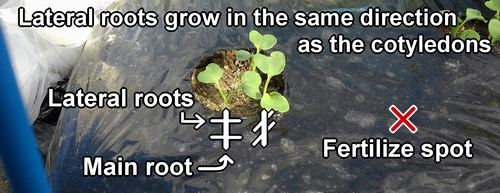
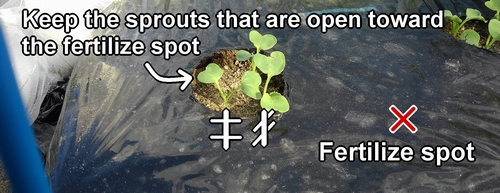
For daikon radish, fertilization is not necessarily done every year. The decision to fertilize or not depends on the soil condition and the growth status of the daikon.
Fertilizing can lead to an increase in aphids and attract pests when the soil fertility is high. Whether to fertilize or not depends on carefully assessing the situation.
I thinned the daikon radish, leaving 3 cotyledons. The first thinning is now complete.
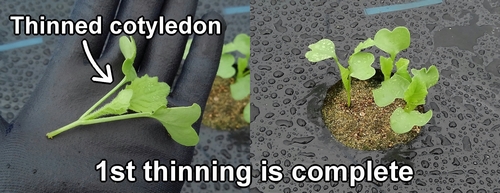
Daikon radish thinning: 2nd Round (The thinned greens are also part of the harvest)
The 2nd thinning of daikon radish is done when there are 3 to 4 true leaves. About 1 week has passed since the first thinning of daikon radish, and approximately 15 days have passed since the daikon seeds were sown.
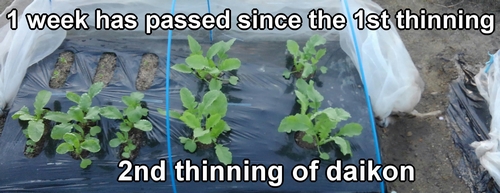
The focus of this thinning is on the leaves. We keep the plants with daikon leaves growing upwards, light green color, and symmetric leaf shapes, as they indicate healthy growth. On the contrary, we thin out plants that have leaves spreading and lying down or those with excessively dark leaf color.
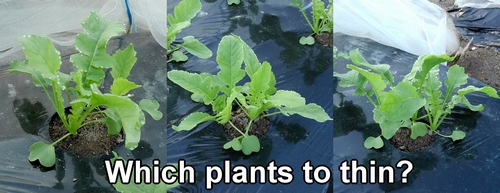
The thinned daikon greens harvested during this thinning can certainly be eaten. I chop the thinned daikon greens and use them in miso soup. Since there are only a few thinned greens, their usage is limited, but it’s also part of the harvest.
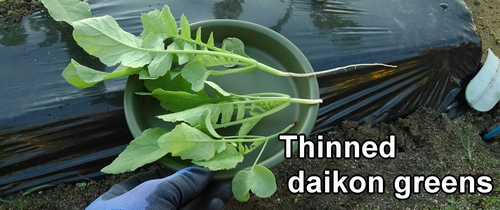
I thinned daikon from 3 plants to 2. The second thinning is now complete. (We leave areas with 1 hole and 2 plants or fewer without thinning.)
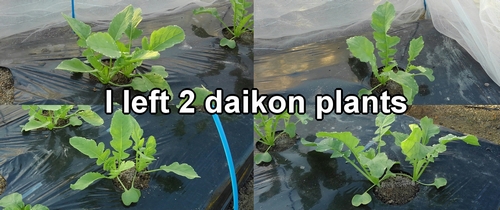
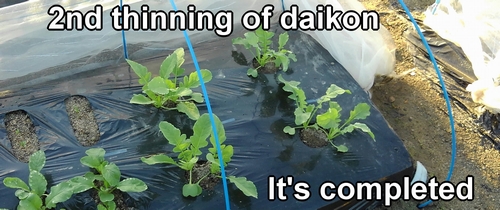
Daikon radish thinning: 3rd round (In thinning, leave one healthy daikon plant)
The final, 3rd thinning of daikon radish is done when there are 5 to 6 true leaves. (About 5 days have passed since the 2nd thinning. It has been about 3 weeks since sowing daikon radish seeds.)
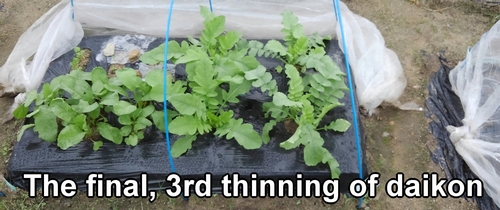
The key to thinning, similar to the second round, is the daikon radish leaves. We look at the leaves and keep the ones that seem to be growing well. Thinning is done for plants with issues like black stems, excessive thickness, or growing at an angle.
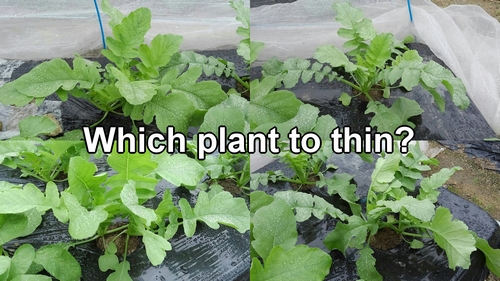
The thinned daikon greens, too, have increased in the number of true leaves and have developed some volume. If there were a bit more, it seems they could be used for stir-frying.
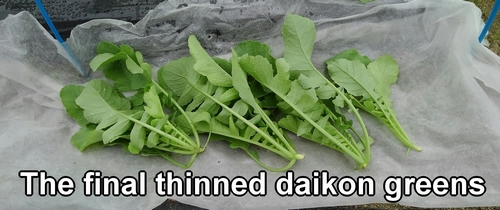
With this, the thinning process for the daikon radish is complete. May the remaining plants grow into splendid daikon.
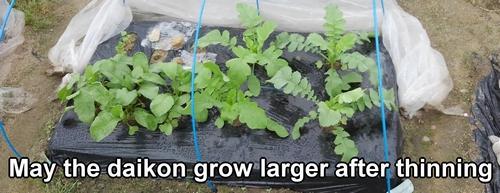
Following is the video for how-to. English subtitles are available.
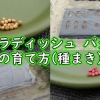

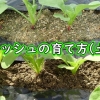
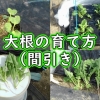
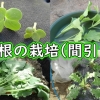
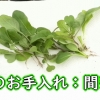
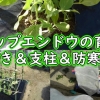



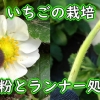
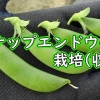
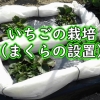
Discussion
New Comments
No comments yet. Be the first one!